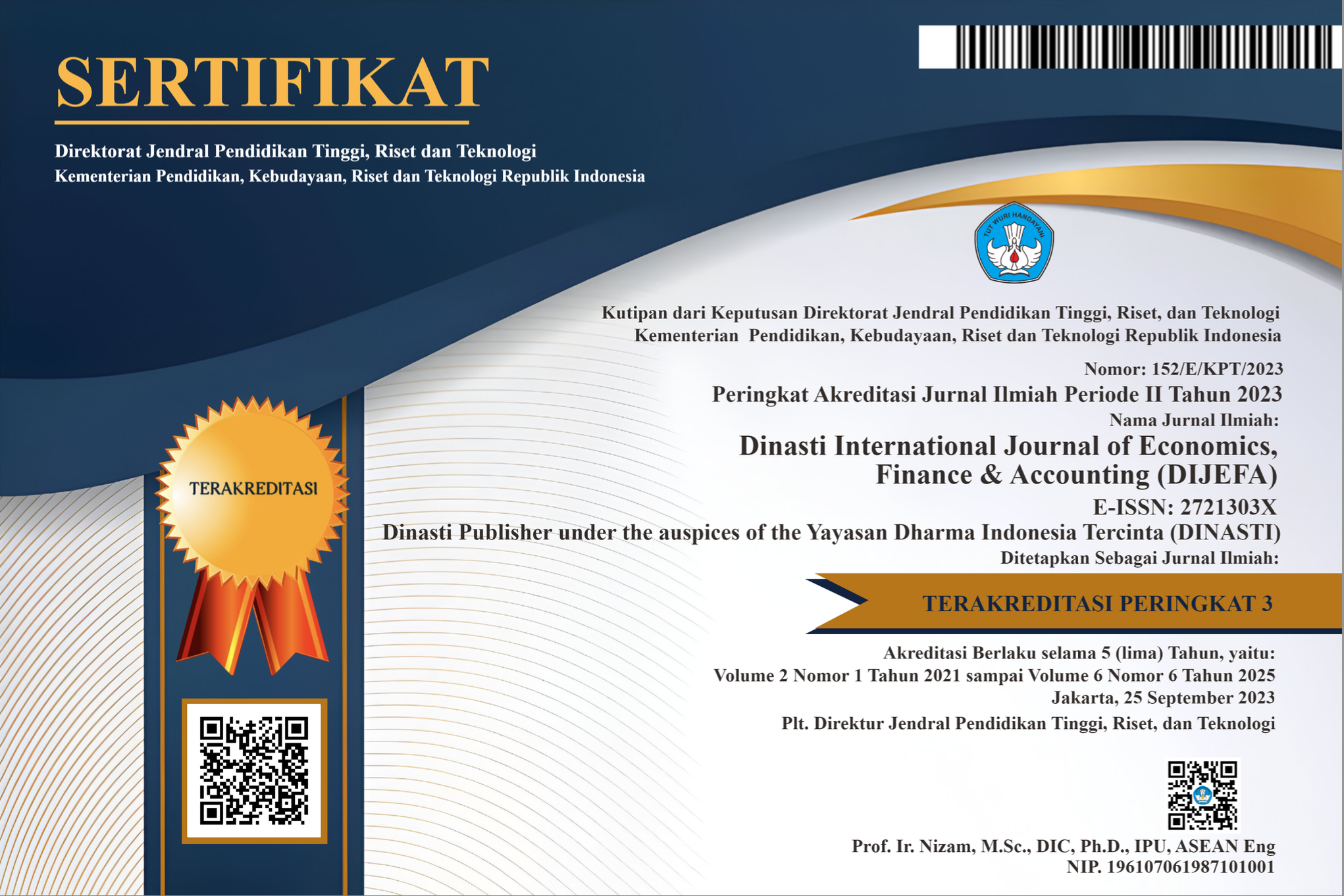IMPLEMENTATION OF ERGONOMICS IN THE WORK ENVIRONMENT FOR EMPLOYEE HEALTH AND SAFETY
DOI:
https://doi.org/10.38035/dijefa.v1i2.269Keywords:
Health, Safety, ErgonomyAbstract
This reserach based on health issues because of the employee that Appear ergonomical failure. This condition can be a burden for the company peroductivity and performance. Many industries look this issue as a minor issue and they concern not to take this into serious discussions to solve the issue, but this minor issue can effect spesifically Become a major issue for the health and safety of the employees in the company. This research objectives is to describe the implication of ergonomical failure to health and safety of emplyee that can effect the company productivity and performance. By comparing some of Articles that already discuss about this issue, the author want to give insight about how important this issue and give solution from ergonomical view.
References
Bagaskara, G., Creative, FI, and Telkom, U. (2008). Journal of telecoms university thesis.
Baumann, A., Holness, DL, Norman, P., Idriss-wheeler, D., & Boucher, P. (2012). The Ergonomic Program Implementation Continuum (EPIC): Integration of health and safety - A process evaluation in the healthcare sector. Journal of Safety Research, 43 (3), 205-213. https://doi.org/10.1016/j.jsr.2012.07.003
Hariyono, W., Soebijanto, Husodo, AH, & Maurits, LS (2010). ERGONOMIC DESIGN SYSTEM OF WORK IN INDUSTRIAL MAINTENANCE LOCOMOTIVE "YASA CENTER YOGYAKARTA" Movement Studies and Outstanding Work For Contributions Application Management System Occupational Health and Safety of Railways. 13 (01), 23-32.
Kasongan, GDI (2006). Working system with total ergonomic approach to reducing musculoskeletal disorders, fatigue and workload and increase worker productivity pottery industry in kasongan, Bantul.
Kemnaker. (1970). Law No. 1 Year 1970 About Safety. President of Indonesia, (5). https://doi.org/10.1002/ajh.2830490214
King, PM, Fisher, JC, & Garg, A. (1997). Evaluation of the impact of employee ergonomics training in industry. 28 (4).
Sedarmayanti. (2009). Human Resources and Labor Productivity: Sedarmayanti - Belbuk.com. Retrieved from Mandar Maju website: https://www.belbuk.com/sumber-daya-manusia-dan-produktivitas-kerja-p-13271.html
Simamora, H. (2004). Human Resource Management Edition 3. Human Resources, 4-45.
Tappin, DC, Bentley, TA, & Ashby, LE (2015). An implementation evaluation of a qualitative culture assessment tool. Applied Ergonomics, 47, 84-92. https://doi.org/10.1016/j.apergo.2014.08.012
Yeow, PHP, and Nath, R. (2003). Quality, productivity, occupational health and safety and cost effectiveness of ergonomic improvements in the test workstations of an electronics factory. 32, 147-163. https://doi.org/10.1016/S0169-8141(03)00051-9
Downloads
Published
How to Cite
Issue
Section
License
Authors who publish their manuscripts in this journal agree to the following conditions:
- The copyright on each article belongs to the author(s).
- The author acknowledges that the Dinasti International Journal of Economics, Finance & Accounting (DIJEFA) has the right to be the first to publish with a Creative Commons Attribution 4.0 International license (Attribution 4.0 International (CC BY 4.0).
- Authors can submit articles separately, arrange for the non-exclusive distribution of manuscripts that have been published in this journal into other versions (e.g., sent to the author's institutional repository, publication into books, etc.), by acknowledging that the manuscript has been published for the first time in the Dinasti International Journal of Economics, Finance & Accounting (DIJEFA).


























































